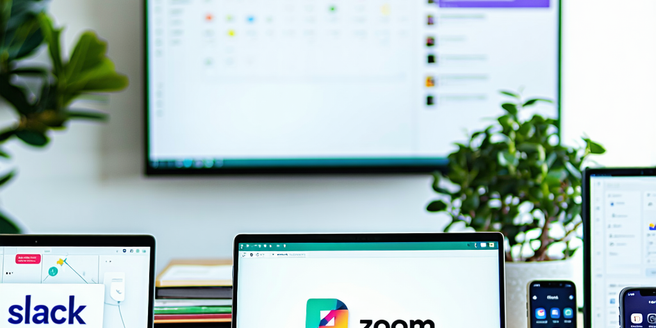
The Role of Technology in Modern Work Environments
Technology has revolutionized the way we work. With the advent of digital tools, remote work has become more feasible, allowing employees greater flexibility in managing their schedules. Collaboration tools such as Slack and Zoom have made communication more efficient, enabling teams to stay connected regardless of geographical distances. Moreover, project management software like Trello and Asana streamline task assignments and progress tracking, enhancing productivity. However, this increased reliance on technology can blur the lines between work and personal life, making it crucial for individuals and companies to establish clear boundaries. As technology continues to evolve, its role in the workplace will only grow, necessitating ongoing adaptations to balance work demands with personal time effectively.
Tools and Apps for Enhancing Productivity
In today’s fast-paced world, numerous tools and apps are designed to boost productivity. Applications such as Todoist and Microsoft To Do help individuals organize tasks by creating prioritized lists, ensuring that nothing is overlooked. Note-taking apps like Evernote and OneNote allow users to capture ideas and information efficiently, accessible from any device. For time management, using tools like RescueTime can provide insights into how time is spent, helping identify areas for improvement. Additionally, focus-enhancing apps like Forest encourage users to stay on task by gamifying the experience. By leveraging these technologies, individuals can maximize efficiency, freeing up time to focus on personal growth and leisure, thus contributing to a healthier work-life balance.
Creating Boundaries Between Work and Personal Life
In the digital age, setting boundaries between work and personal life is crucial to prevent burnout and maintain well-being. One effective approach is to establish a dedicated workspace to physically and mentally separate professional duties from personal activities. Additionally, adhering to a set work schedule and communicating these hours to colleagues and employers helps reinforce boundaries. It’s equally important to limit after-hours communications by implementing policies such as ‘no emails after 7 PM’. Utilizing Do Not Disturb features on devices can support uninterrupted personal time. Taking regular breaks and prioritizing activities that promote relaxation and detachment from work-related stress are vital. By deliberately creating these separations, individuals can enjoy a more fulfilling personal life without the overreach of work demands.
Potential Pitfalls of Overusing Technology
While technology enhances work efficiency, its overuse can lead to several challenges. Constant connectivity can result in information overload, where the volume of data becomes difficult to manage, increasing stress levels. Prolonged screen time can also impair physical health, leading to issues such as eye strain and poor posture. Additionally, the expectation of immediate responses due to constant visibility can cultivate an ‘always-on’ culture, disrupting work-life balance and causing burnout. The boundary between professional and personal spheres becomes fragile, as work can intrude into home life. To mitigate these pitfalls, it’s crucial for individuals and organizations to implement strategies such as setting screen time limits and encouraging regular digital detoxes to ensure technology serves as a tool for productivity rather than a source of stress.
Future Trends in Work-life Balance Solutions
The future of work-life balance lies in innovative solutions that leverage technology in harmonious ways. Wearable devices that monitor stress levels and suggest break times are on the rise, promoting self-care within work environments. Artificial intelligence and machine learning are set to enhance personalized work patterns, optimizing efficiency and reducing unnecessary strain. Virtual reality offers immersive relaxation experiences, providing mental escapes even during short breaks. Employers are increasingly recognizing the value of employee well-being, implementing mental health support programs and flexible work policies. Future advancements will likely focus on developing integrated systems that help individuals maintain productive yet balanced lifestyles, encouraging a holistic approach where technology acts as an enabler of both professional success and personal fulfillment.
